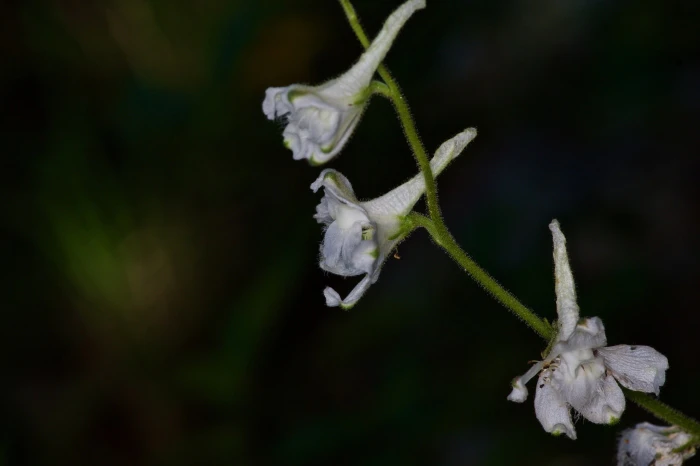Carolina Larkspur
(Delphinium carolinianum subsp. vimineum)
Carolina Larkspur (Delphinium carolinianum subsp. vimineum)
/
/

Michelle W.
CC BY 4.0
Image By:
Michelle W.
Recorded By:
Copyright:
CC BY 4.0
Copyright Notice:
Photo by: Michelle W. | License Type: CC BY 4.0 | License URL: http://creativecommons.org/licenses/by/4.0/ | Rights Holder: Michelle W. | Publisher: iNaturalist | Date Created: 2019-06-12T16:30:34-07:00 |












Estimated Native Range
Climate Requirements for Paramus, New Jersey
| This Plant | Your Site | Plant Suitability for Your Location | ||
|---|---|---|---|---|
| • Precipitation | 14" - 61" | 48" | Aquatic | Aquatic |
| • High Temp. | 85°F - 97°F | 86°F | Your summer temperatures are normal for this plant. | Excellent |
| • Low Temp. | 23°F - 51°F | 21°F | Your winter temperatures may be too cold for this plant | Too cold |
This plant may not grow well at your location - your precipitation is too high.
Summary
Delphinium carolinianum subsp. vimineum, commonly known as Carolina Larkspur, is a deciduous perennial herb native to open woodlands, prairies, and meadows throughout the South-Central United States and Northeastern Mexico. It typically grows to a height of 1-3 feet (0.3-0.9 meters) and a width of 0.3-0.7 feet (0.09-0.2 meters). This species is characterized by its slender stems and deeply lobed leaves, with racemes of showy white and blue flowers that bloom in the late spring and early summer, adding a splash of color to the garden landscape.
Carolina Larkspur is valued for its vertical accent and delicate flowers, which can enhance wildflower gardens, borders, and cottage gardens. It is relatively easy to maintain, requiring minimal care once established. While it prefers well-drained soils, it is somewhat drought-tolerant and can thrive in both part shade and full sun. Gardeners should be aware that all parts of the plant are toxic if ingested, and it may require staking to prevent it from flopping over. There are no widely known cultivars of this subspecies, but its natural beauty makes it a favorite among native plant enthusiasts. Potential problems include susceptibility to powdery mildew and crown rot in poorly drained soils. It is not typically invasive when grown outside its native range, but care should be taken to prevent self-seeding if this is a concern.CC BY-SA 4.0
Carolina Larkspur is valued for its vertical accent and delicate flowers, which can enhance wildflower gardens, borders, and cottage gardens. It is relatively easy to maintain, requiring minimal care once established. While it prefers well-drained soils, it is somewhat drought-tolerant and can thrive in both part shade and full sun. Gardeners should be aware that all parts of the plant are toxic if ingested, and it may require staking to prevent it from flopping over. There are no widely known cultivars of this subspecies, but its natural beauty makes it a favorite among native plant enthusiasts. Potential problems include susceptibility to powdery mildew and crown rot in poorly drained soils. It is not typically invasive when grown outside its native range, but care should be taken to prevent self-seeding if this is a concern.CC BY-SA 4.0
Plant Description
- Plant Type: Herb
- Height: 1-3 feet
- Width: 0.3-0.7 feet
- Growth Rate: Moderate
- Flower Color: White, Blue
- Flowering Season: Spring, Summer
- Leaf Retention: Deciduous
Growth Requirements
- Sun: Part Shade, Full Sun
- Water: Low
- Drainage: Medium
Common Uses
Bee Garden, Bird Garden, Butterfly Garden, Deer Resistant, Hummingbird Garden, Low Maintenance, Rabbit Resistant
Natural Habitat
Native to open woodlands, prairies, and meadows
Other Names
Common Names:
Scientific Names: Delphinium carolinianum subsp. vimineum, Delphinium barrancae, Delphinium vimineum, Delphinium azureum var. vimineum, Delphinium virescens var. vimineum, Delphinastrum vimineum
GBIF Accepted Name: Delphinium carolinianum subsp. vimineum (D.Don) M.J.Warnock